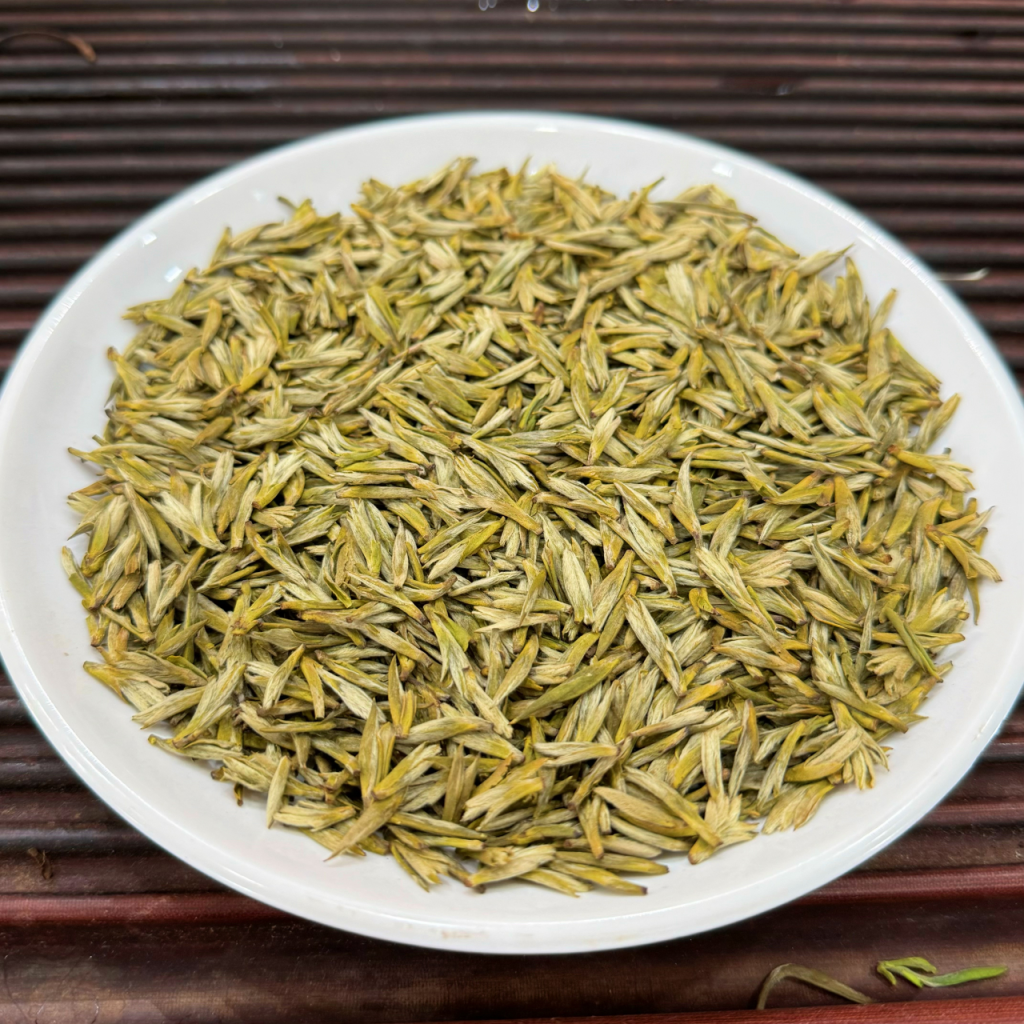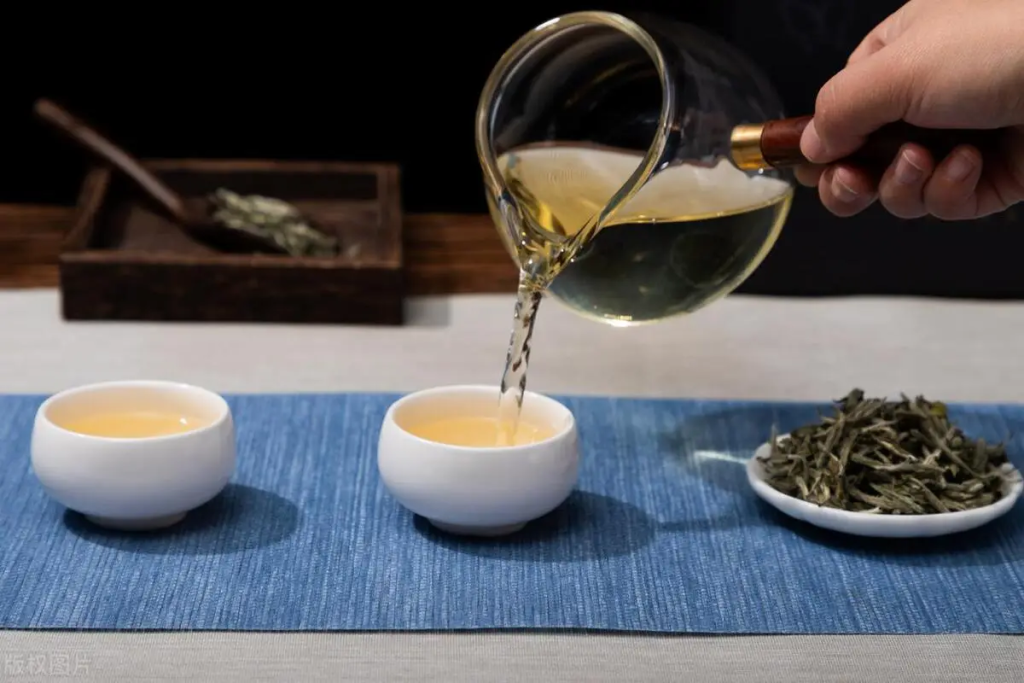The detailed exploration of the differences and connections between white tea and yellow tea:

- Processing Techniques:
- White Tea: The production of white tea involves minimal processing. The core technique is withering, followed by drying. This process retains most of the natural substances in the tea leaves.
- Yellow Tea: Yellow tea undergoes a more complex production process, with the defining step being the yellowing (menhuang) process. This involves wilting, fixing, yellowing, and drying, resulting in the tea’s unique yellow color and aroma.
- Appearance and Color:
- White Tea: White tea is characterized by its silvery-white appearance due to the white hairs covering the leaves. The infused tea liquor is relatively light in color.
- Yellow Tea: Yellow tea has yellow dry leaves, yellow liquor, and yellow leaf bases after infusion, giving it a distinctive yellow hue.
- Taste and Aroma:
- White Tea: White tea has a soft, sweet, and mellow taste with a faint floral aroma. It is resistant to multiple infusions and retains its flavor well.
- Yellow Tea: Yellow tea has a tender aroma with a mild and harmonious taste. It often has a distinct chestnut flavor, with light grassy and bitter notes that are less prominent.
- Tea Nature:
- White Tea: White tea is generally considered to have a cool nature, suitable for consumption by people of all ages. However, well-processed white tea can have a mild and beneficial nature.
- Yellow Tea: Yellow tea is known for its mild and gentle nature. The digestive enzymes produced during the yellowing process are beneficial for the spleen and stomach.
- Nutritional Content:
- White Tea: White tea contains higher levels of tea polyphenols, amino acids, caffeine, flavonoids, and soluble sugars compared to yellow tea. These components contribute to its health benefits.
- Yellow Tea: Although yellow tea also contains these nutrients, its levels are generally lower than those in white tea.
- Production Cost and Complexity:
- White Tea: The production process of white tea is simpler and involves fewer steps, resulting in lower production costs.
- Yellow Tea: The production process of yellow tea is more complex and involves more steps, leading to higher production costs and labor requirements.
Connections Between White Tea and Yellow Tea
- Both Belong to the Category of Lightly Fermented Teas:
- Both white tea and yellow tea undergo minimal fermentation during their production processes, making them part of the lightly fermented tea category.
- Share Similar Health Benefits:
- Both white tea and yellow tea are rich in antioxidants and have anti-inflammatory properties. They can help improve skin health and aid in weight loss.
- Produced in China:
- Both white tea and yellow tea are traditional Chinese teas with a long history and cultural significance. They are produced in various regions of China, each with its unique production techniques and quality characteristics.
While tea and yellow tea share some similarities, they also have distinct differences in processing techniques, appearance, taste, nature, nutritional content, and production cost. Understanding these differences can help consumers make informed choices when selecting their preferred type of tea.



